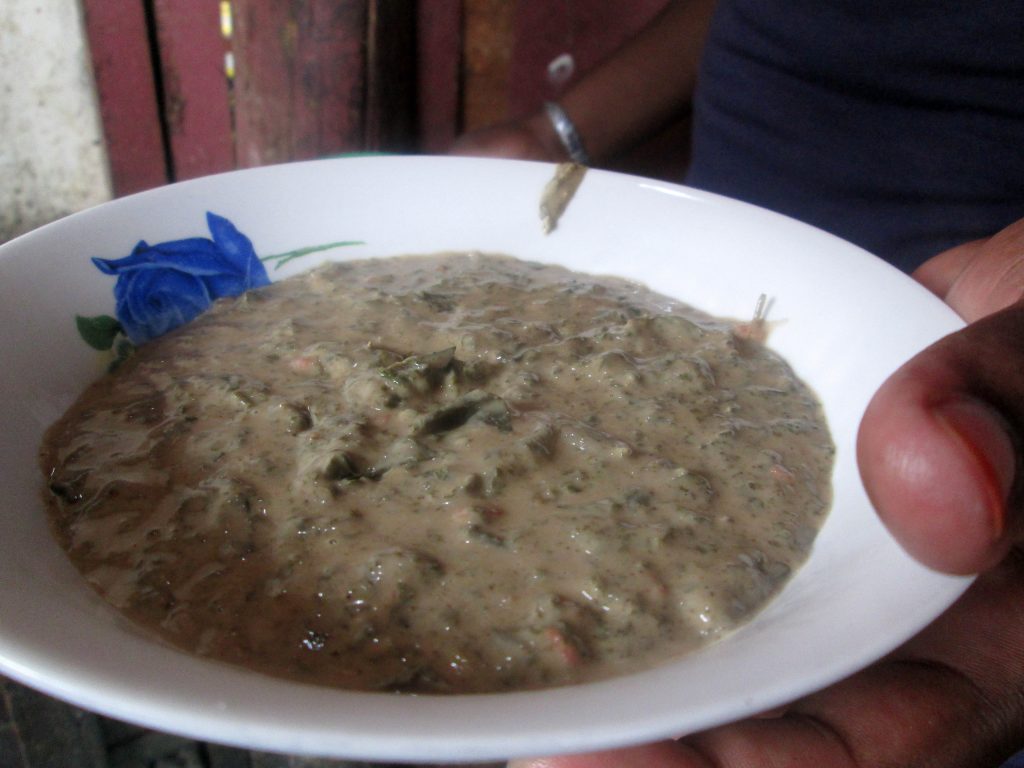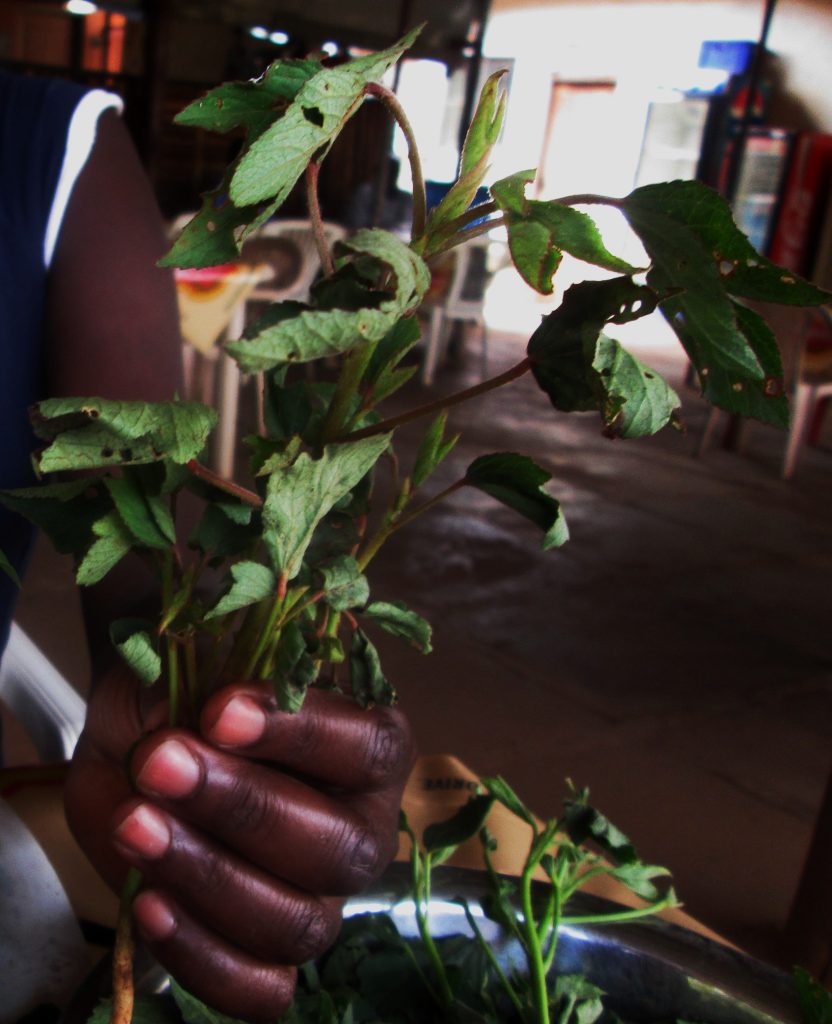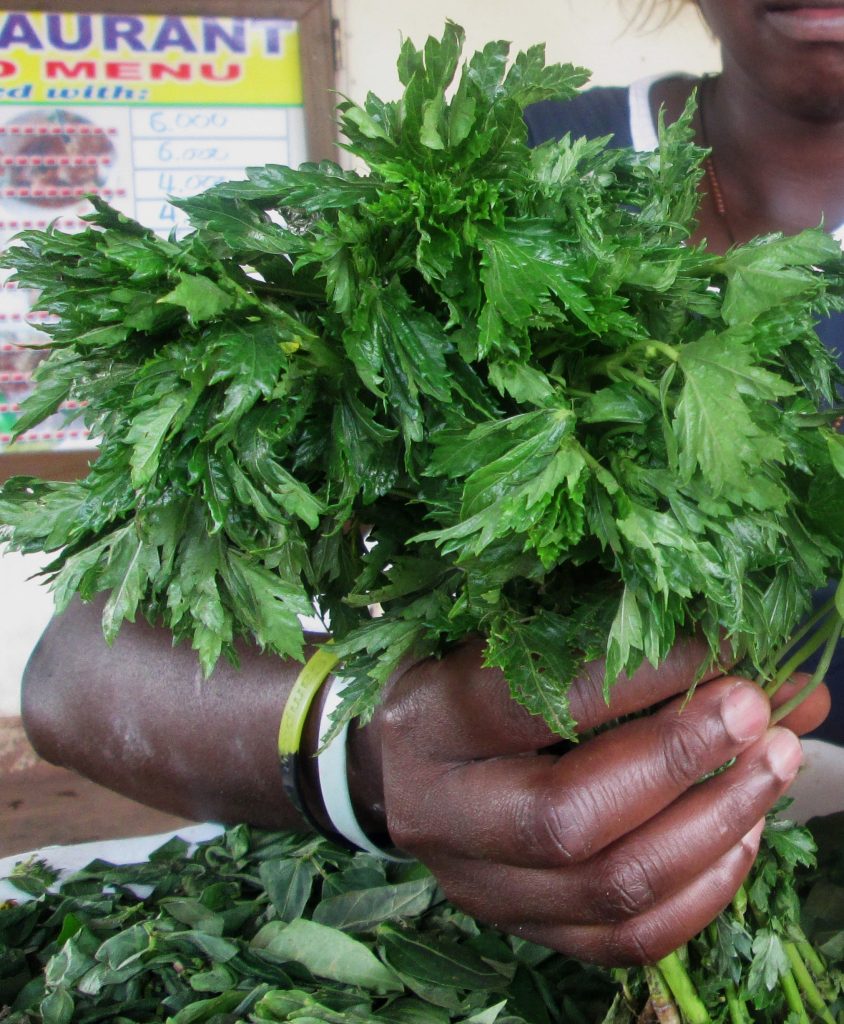Malakwang and Boo are unique sauces crafted from a variety of green leaves, holding a special place in the culinary traditions of Northern Uganda.
When presented on a plate, it can be challenging for many to distinguish between the two.

However, Suzan Acili, a cook at a Restaurant in Nakawa, Kampala, emphasizes that they are indeed distinct and each has its own preparation method.
“They are all made from green leaves but different types. The two sauces test differently,” she explains.
Jennifer Lakicha, another cook, points out that the ingredients and methods for making the two sauces are quite distinct.
Malakwang has a bitter taste and takes on a brownish hue when it’s done, whereas Boo is not bitter at all and turns a greenish color when it’s ready.
Prepare Malakwang

Lakicha explains that the first step is to carefully pluck the leaves from their stalks, then place them in a clean dish for washing. After rinsing, the leaves are submerged in cold water and boiled for about five to eight minutes without any additional ingredients.
Alternatively, some people prefer to soak the greens in warm water for around 20 minutes. Once the leaves change color, drain the water.
Next, the boiled leaves are transferred to fresh water along with sliced tomatoes and rock salt. This mixture is boiled for a few minutes until the tomatoes soften and the salt dissolves, which helps to mellow the bitterness of the dish.
Malakwang can be enjoyed on its own or mixed with a local groundnut paste known as ‘odii’, depending on personal preference. A stirring stick is used to blend the paste in.
While non-pasted Malakwang is edible, it tends to be quite bitter.
Lakicha emphasizes its benefits, particularly for new mothers, as it aids in boosting breast milk production and can also assist those dealing with appetite issues and hypertension.
To balance the bitterness, Malakwang is ideally paired with sweet potatoes.
Boo preparations
Boo sauce differs from Malakwang in that it incorporates two varieties of leaves: Boo and Okrato. Culturally, these leaves are left unwashed, unlike the Malakwang, to preserve their nutrients.

Lakicha explains that washing the leaves causes them to harden, which prolongs the cooking process.
Steps
Begin by separating the leaves from the stalks and sun-drying them for approximately 10 minutes. This process enhances their aroma and makes it easier to remove any dirt.
Carefully chop the Boo leaves into tiny pieces with a knife.
Next, take some Okrato leaves and slice them into small pieces as well, then combine them with the Boo.
Okrato adds a delightful thickness and smoothness to the sauce.
Introduce the chopped greens into a pot of boiling water seasoned with rock salt, which helps them cook more quickly.
Once the mixture is boiling, add tomatoes, and in about 10 to 20 minutes, it will be ready for blending into a paste.
Lakicha mentions that Boo has a pleasant aroma, is not bitter, and turns a vibrant green when cooked. This sauce is also made in various regions of Eastern and Central Uganda.
She explains that in some areas, the leaves are prepared by boiling and then sun-drying them, often in anticipation of the dry season.
They can also be pounded and used as an additive in other sauces, such as those made with beans or groundnuts.
Boo pairs wonderfully with rice, millet, matooke, and other dishes. Ends































